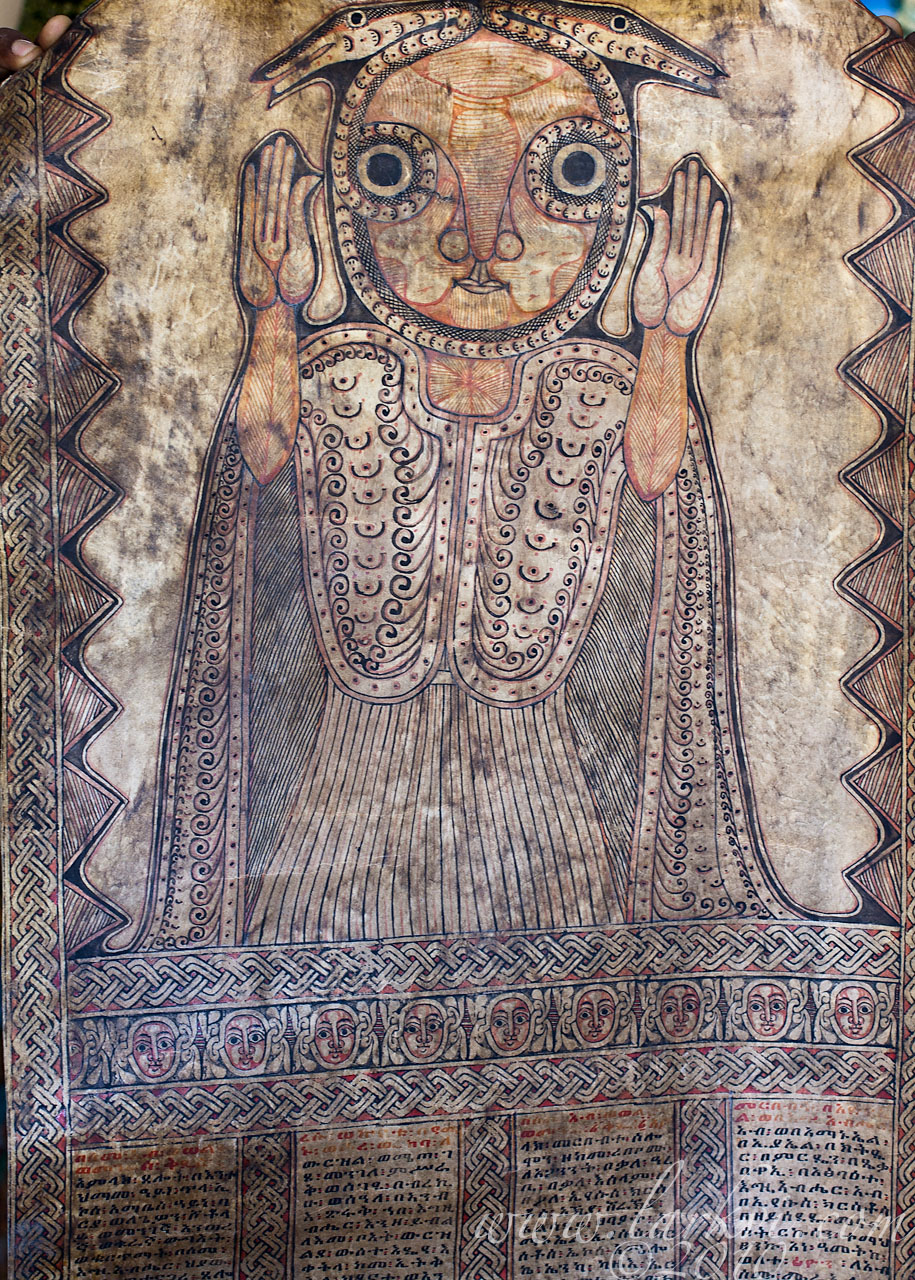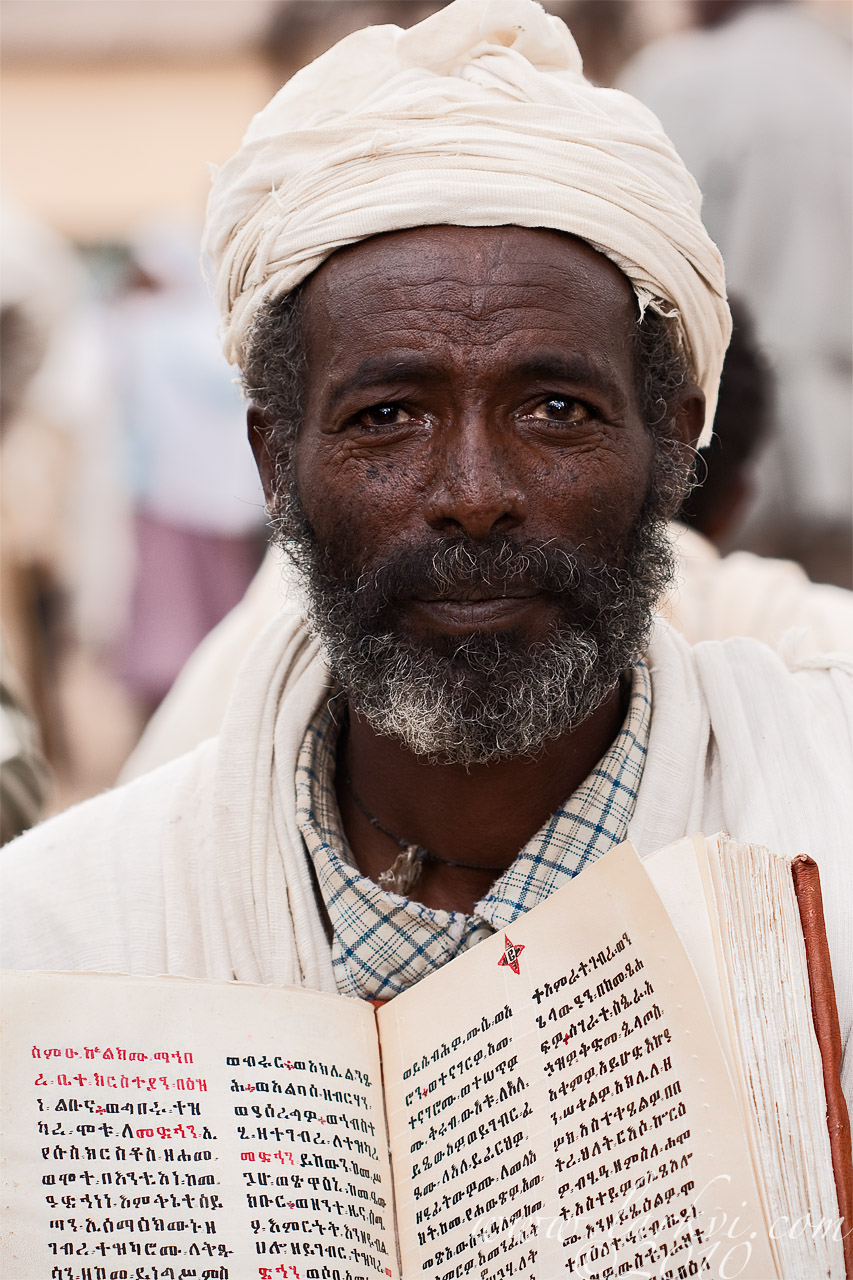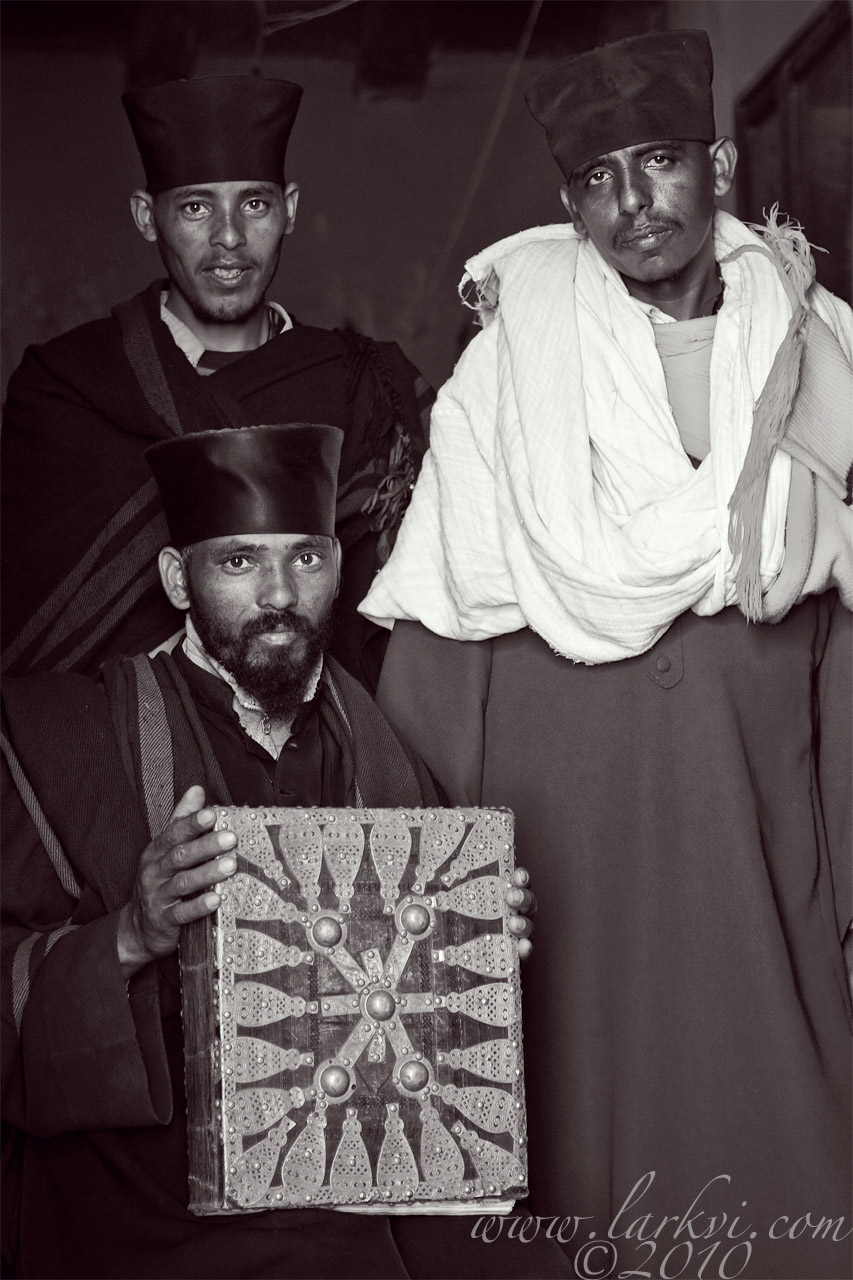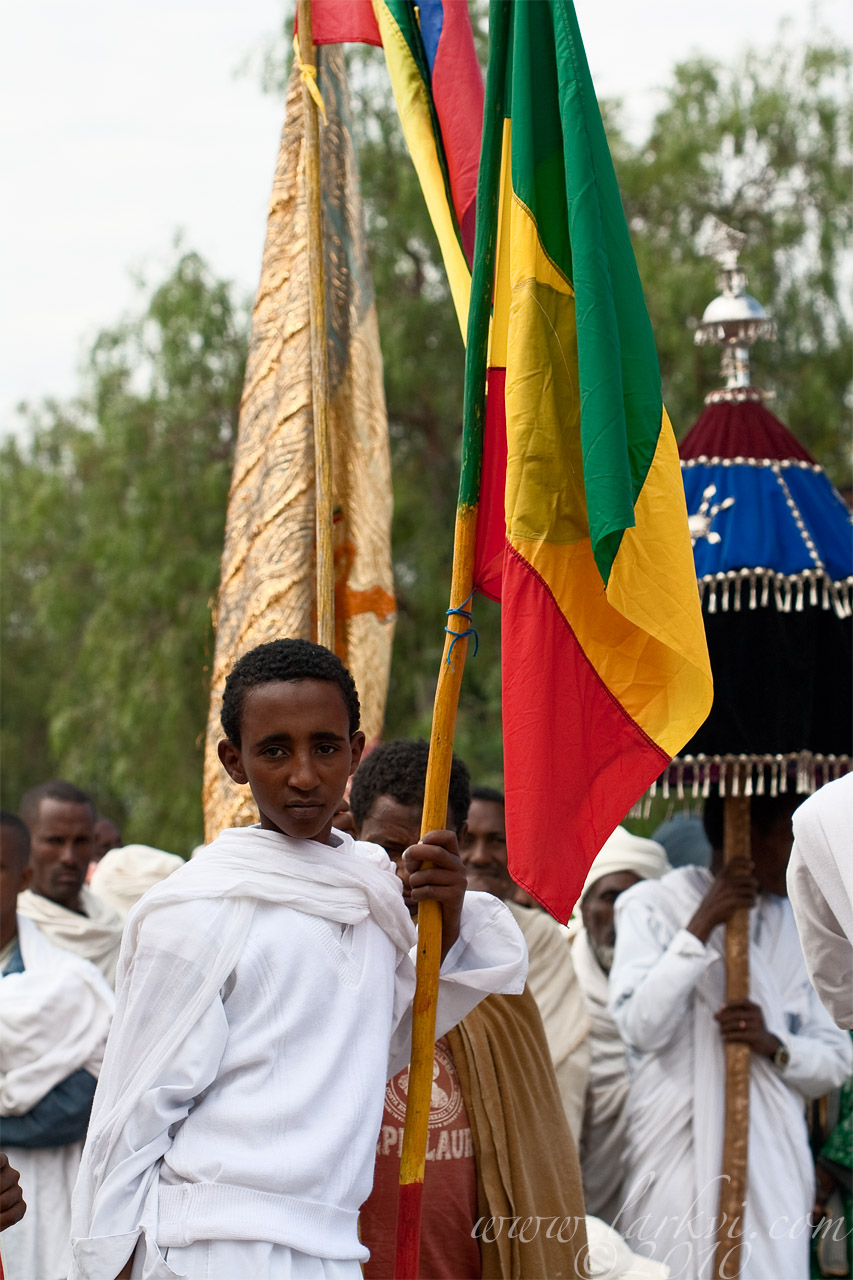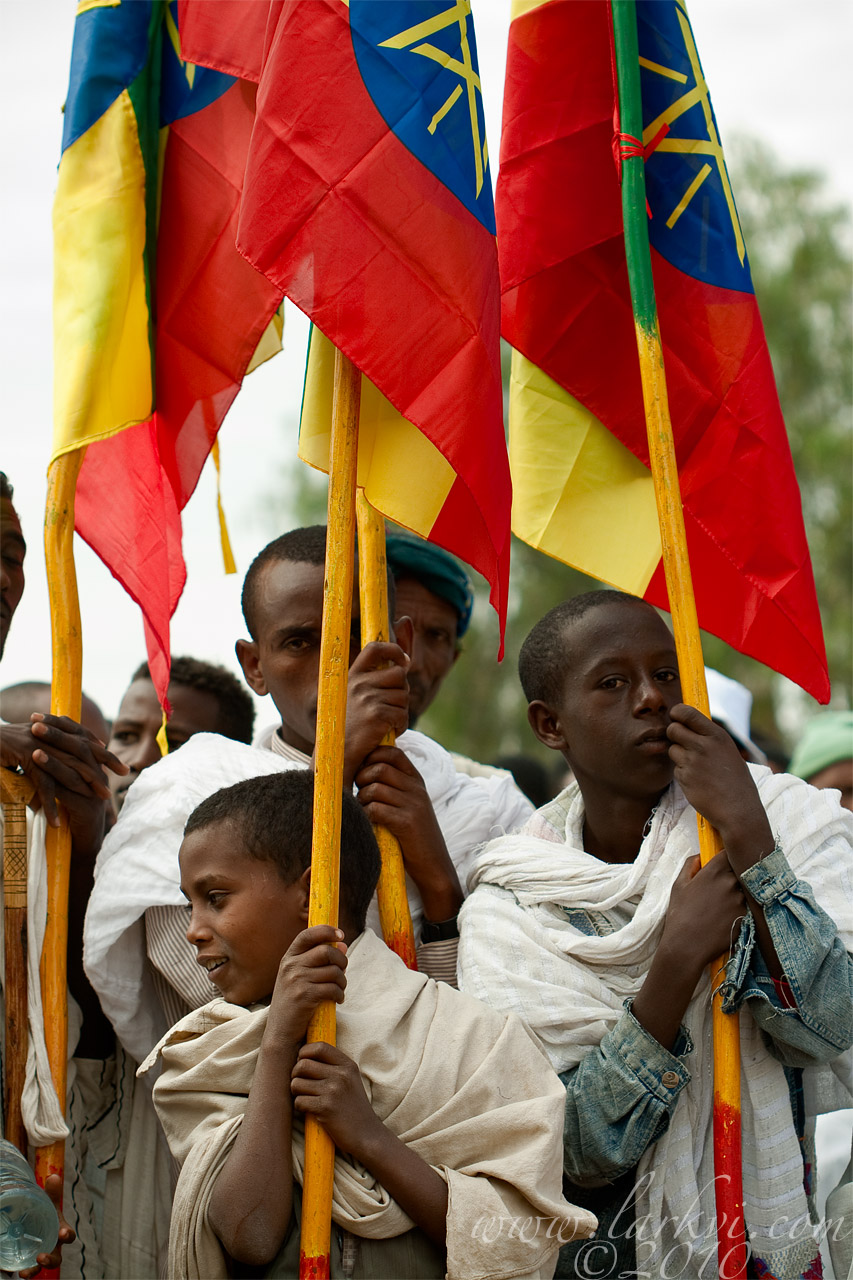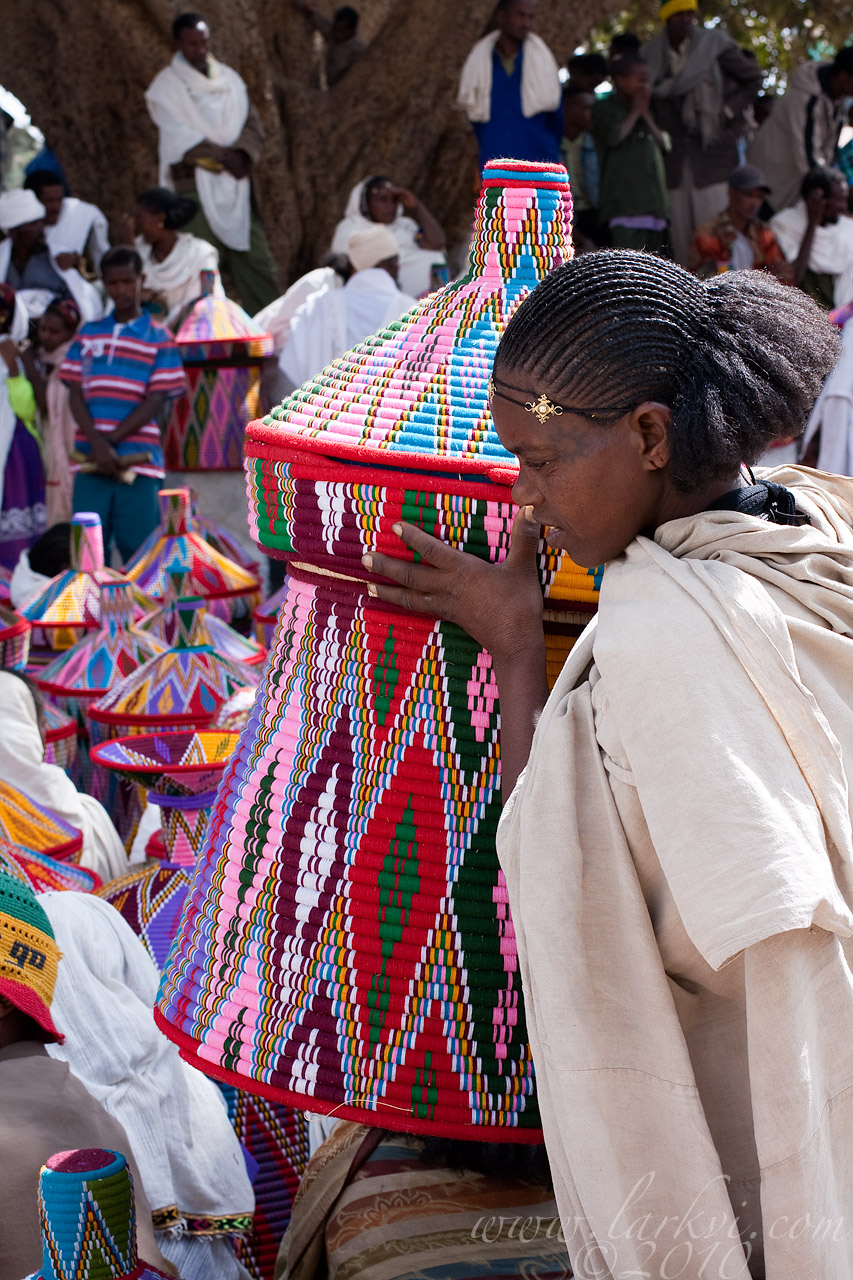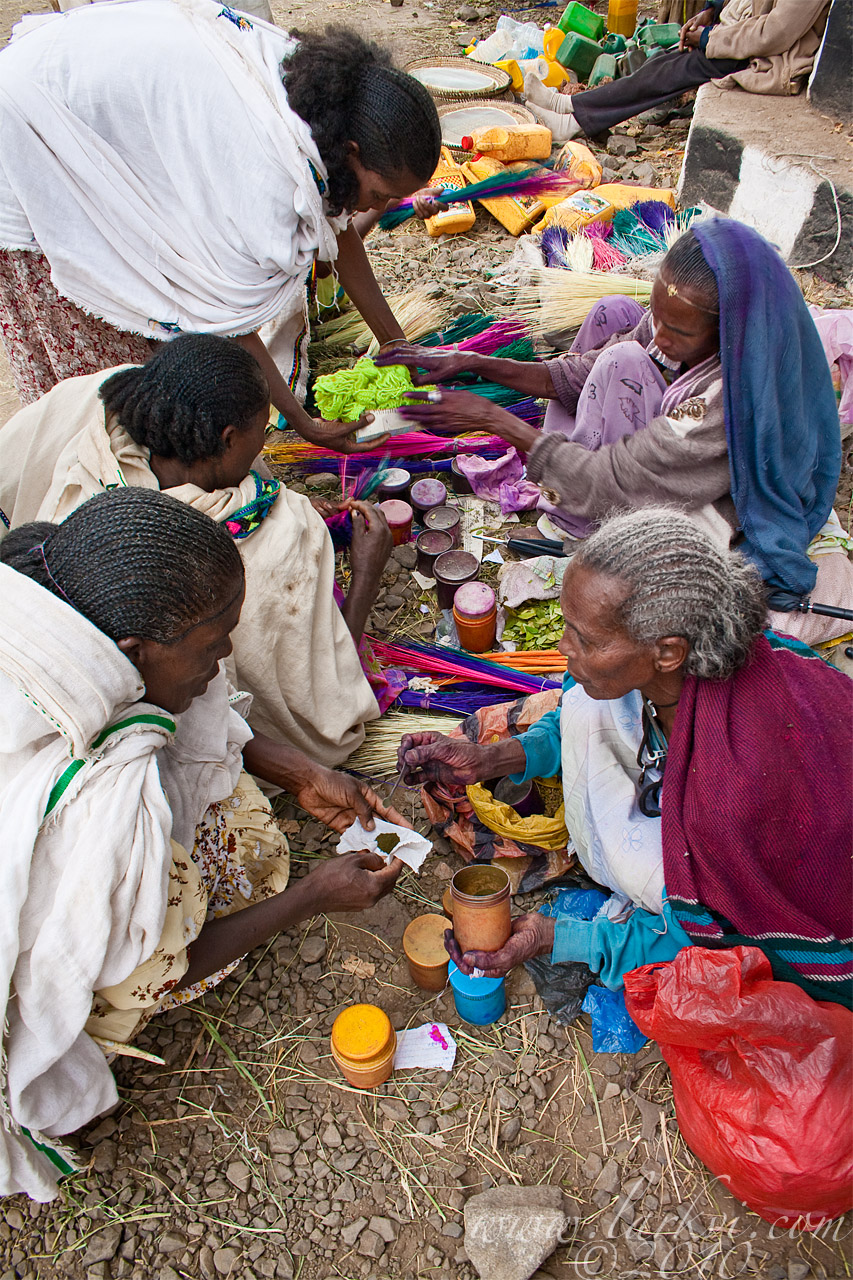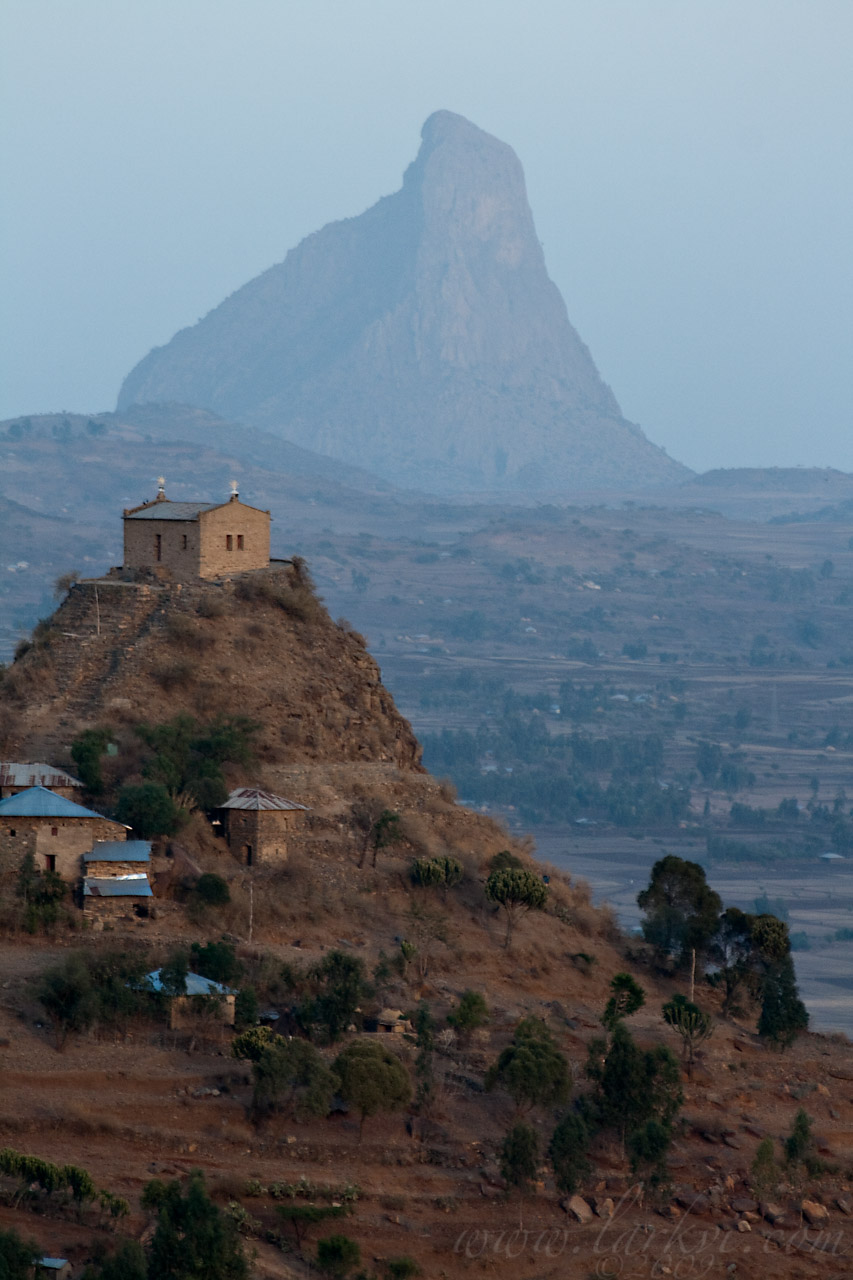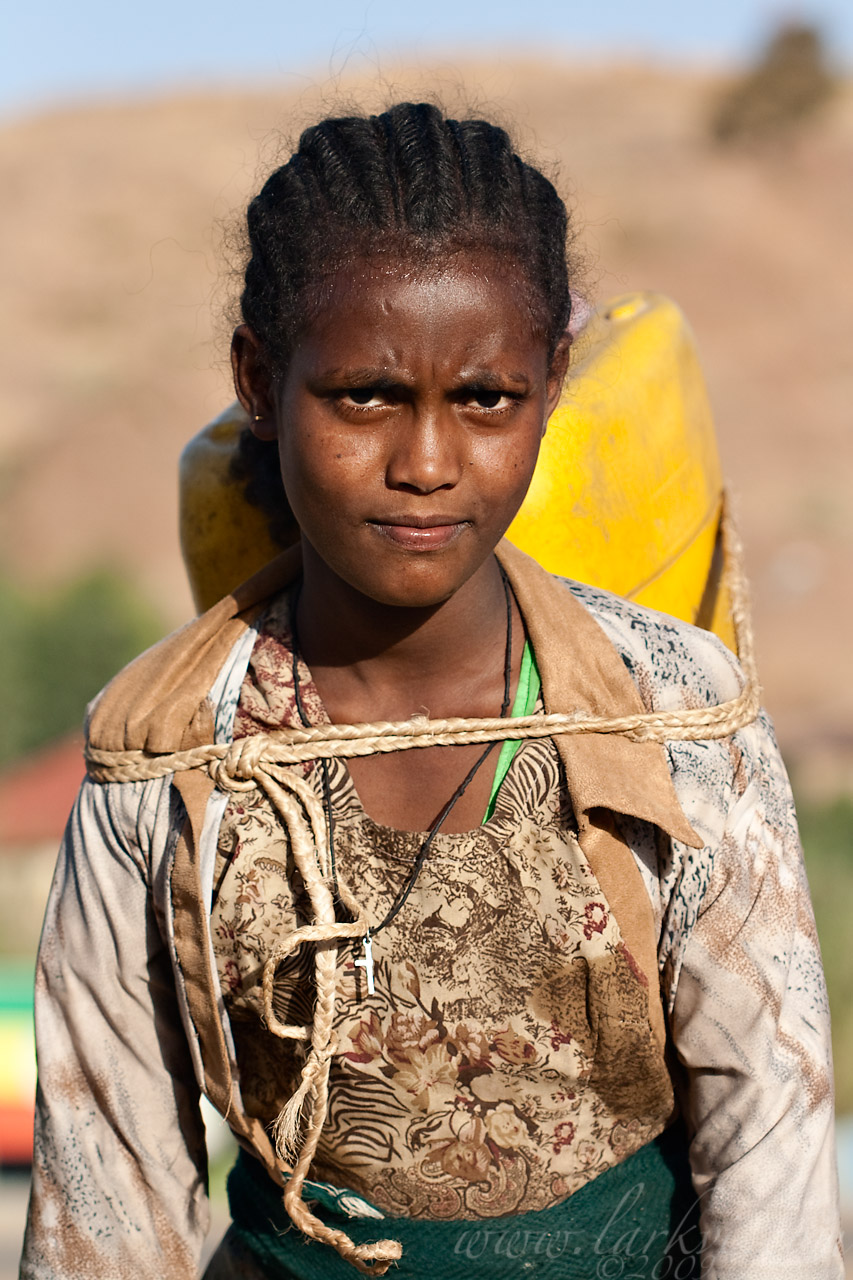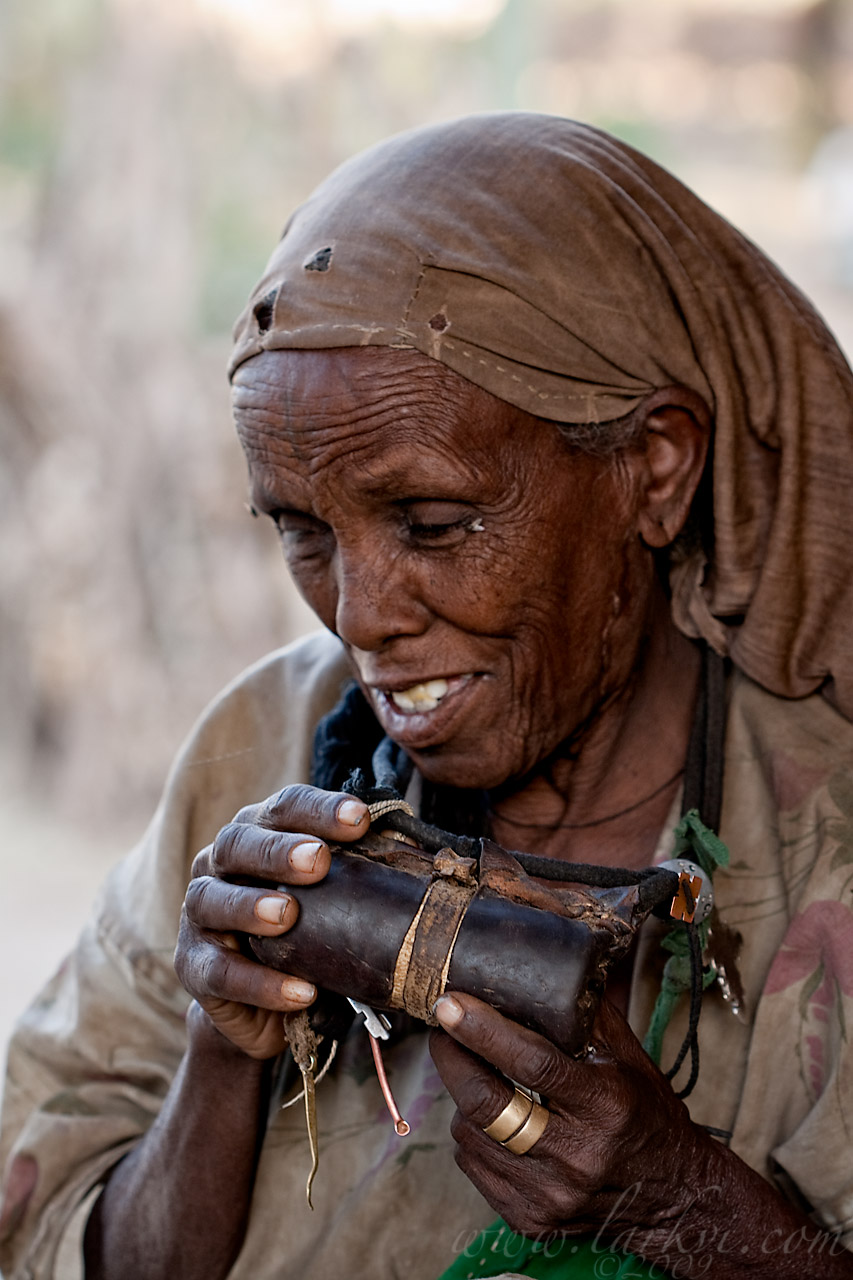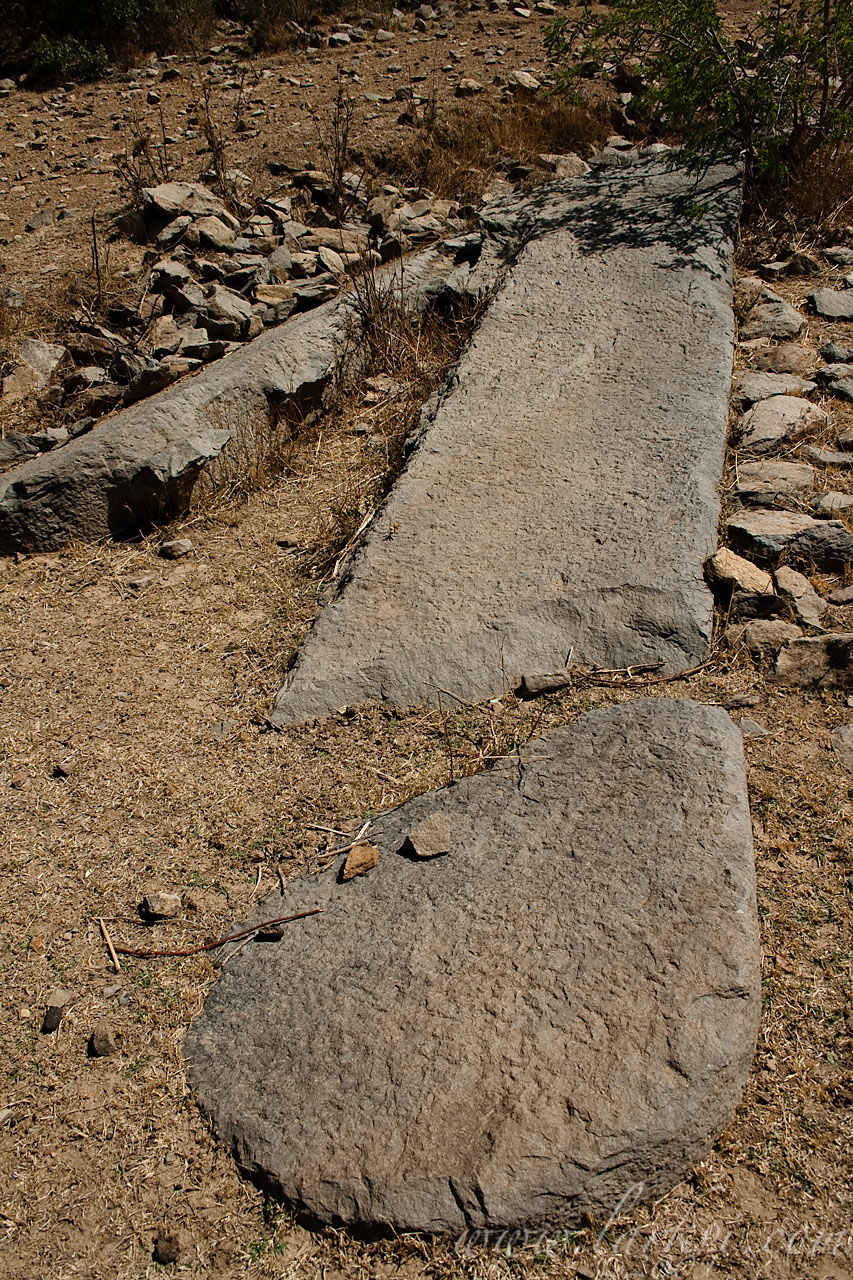An image of a demon stares out from the first panel of a magical (prayer) scroll. The image of the demon has inherent magical significance, but it also is meant to show attacking demons their own visage, and thus to scare them. A useful introduction is Jacques Mercier’s ‘Ethiopian Magic Scrolls,’ which presents a variety of images with commentary.
Tag: Tigray
Scribe, Book Market, Axum, 2009
Treasure-Keepers, Abba Garima Monastery, Tigray, Ethiopia, 2009
Monks at the treasury of Abba Garima Monastery display the treasure-binding of a deluxe manuscript (presumably 17th-18th c.). Abba Garima Monastery is famous as the home of the oldest book in Ethiopia (not pictured), which has been carbon-dated to the 6th century. It is also the home monastery of the current patriarch, Abuna Paulos.
Flag-Bearers, Axum, Ethiopia, 2009
Abuna Paulos, Axum, Ethiopia, 2009
Baskets and Dye, Axum, Tigray, Ethiopia, November 2009
The basket market, under a large tree in the centre of town.
The dye sellers measure out dyes for baskets, under a different large tree near the ‘old town.’
———-
Women bring their brightly-colored handwoven injera baskets to the market at the center of town for the market attached to the festival of Maryam Tsion (St. Mary of Zion) in Axum, Ethiopia. The basket serves as both table and covering for meals, and is a prominent feature of many living rooms.
Abba Pentalewon Monastery, Axum, Tigray, Ethiopia, May 2009
Water-bearers, Axum, Tigray, Ethiopia, April 2009
These girls were carrying water from the “Queen of Sheba’s Bath,” a reservoir that has been in use since ancient times, to their homes. Before the advent of cheap plastic goods, local pottery would be used, and in rural areas, one can sometimes still see women and children with large ceramic jugs strapped to their backs in the same fashion as these plastic ones.
The traditional jug is similar to the one I photographed here, in Southern Ethiopia:
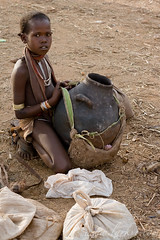
Woman and Scroll, Axum, Tigray, Ethiopia, May 2009
An old woman shows her Kitab Ma’ari–a traditional magic scroll commissioned as a form of healing and worn in a scroll-case around her neck. The prayers on the scroll will be to protect from harmful magic, such as the evil eye or the magic of däbtäras (magicians) as well as to enlist the aid of angels or other powerful magical creatures with the aid of astrological correspondences (determined through a process known as gedfät). While the length of the scroll is regulated by her height, the great width of this scroll (and her obvious illness) suggests that there are extra magical prayers and talismanic images (Kitab or Tälsam), rather than the 3 or 1 that are normal.
I almost did not take this photo–I was just giving alms to the ill beggars that sit at this particular entrance to the St. Mary of Zion Church compound, on my way to the old church, when I noticed that this woman was wearing an extremely-large example of one of the texts that I was studying. She was gracious enough to let me take a photo to illustrate the way that these texts are worn.
Magic is regulated in Ethiopia as a form of medicine, and unlicensed or ‘black’ magic is punishable with prison. Most of the licensed practitioners are members of the Church, who are thought to have sufficient moral and religious training to use the magic effectively and appropriately.
If you are interested in seeing some images from magic scrolls, see Mercier, Jaques. Ethiopian Magic Scrolls.
Double Stela, Beta Gyorgis Quarry, Axum, Tigray, Ethiopia, May 2009
The so-called “double stele,” which sources have identified as an incomplete two-topped stela. I somewhat wonder if it is not just the incomplete-quarrying that has led to this identification, but it is interesting to see two stelae quarried immediately adjacent to each other, in any case.
The Beta Gyorgis “House of (St.) George” Quarry is on the hill above Axum, but was significantly less-important than the Gobedra quarry 5km outside of town. The stela(e) show how the quarrying worked–grooves were cut out of the rock before being freed. Stelae were apparently unworked when they were translated into Axum, and carved in place–a sensible way to avoid wasting effort on something that breaks in transit.
I don’t claim any art to this photo–it was taken in middle off a very sunny day, and it shows!

